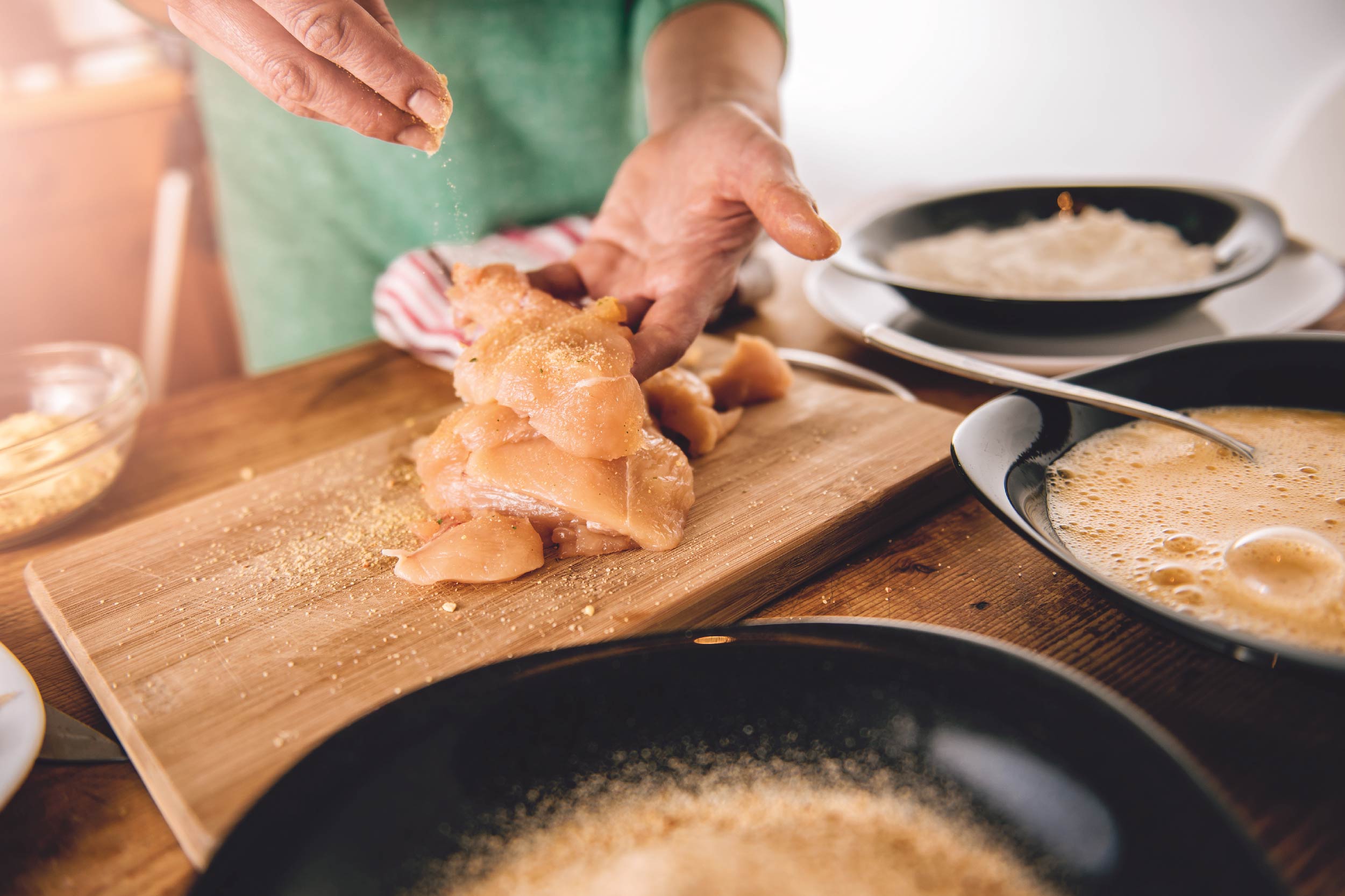
Chef Reveals The Most Common Food Mistakes EVERYONE Makes
1. Instead of adding salt, add something acidic
 Image source/ livecubSometimes to make the flavours pop it's not always more salt that you need to add. Try adding something acidic, whether it is white wine vinegar or a squeeze of lemon. It brings out the flavour without having to add too much salt and of course, it's way healthier than oversalting.
Image source/ livecubSometimes to make the flavours pop it's not always more salt that you need to add. Try adding something acidic, whether it is white wine vinegar or a squeeze of lemon. It brings out the flavour without having to add too much salt and of course, it's way healthier than oversalting.Advertisement
2. Put the garlic in AFTER the onion
 Image source/ medicalnewstodayOnion takes quite a few minutes to soften and lightly brown. On the other hand, garlic takes less than one minute due to how much finer it is. So, it doesn't make sense to add them add the same time. Add the garlic after. Nobody wants that bitter burnt garlic aftertaste.
Image source/ medicalnewstodayOnion takes quite a few minutes to soften and lightly brown. On the other hand, garlic takes less than one minute due to how much finer it is. So, it doesn't make sense to add them add the same time. Add the garlic after. Nobody wants that bitter burnt garlic aftertaste.Advertisement
3. Clean as you go along
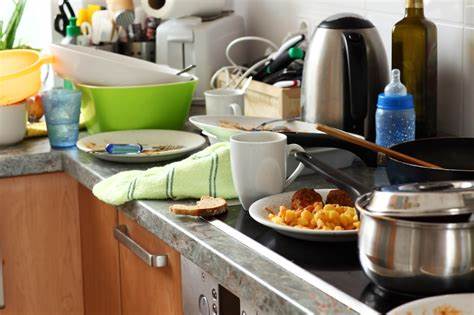 Image source/ livingbylittlesClean as you go along. Don't wait for the aftermath when the kitchen looks like pure chaos because by that point you've enjoyed your good food, you're full up and relaxed. The last thing you want to do is go back into the kitchen to tackle the chaos that you created.
Image source/ livingbylittlesClean as you go along. Don't wait for the aftermath when the kitchen looks like pure chaos because by that point you've enjoyed your good food, you're full up and relaxed. The last thing you want to do is go back into the kitchen to tackle the chaos that you created.Advertisement
4. Salt the pasta water
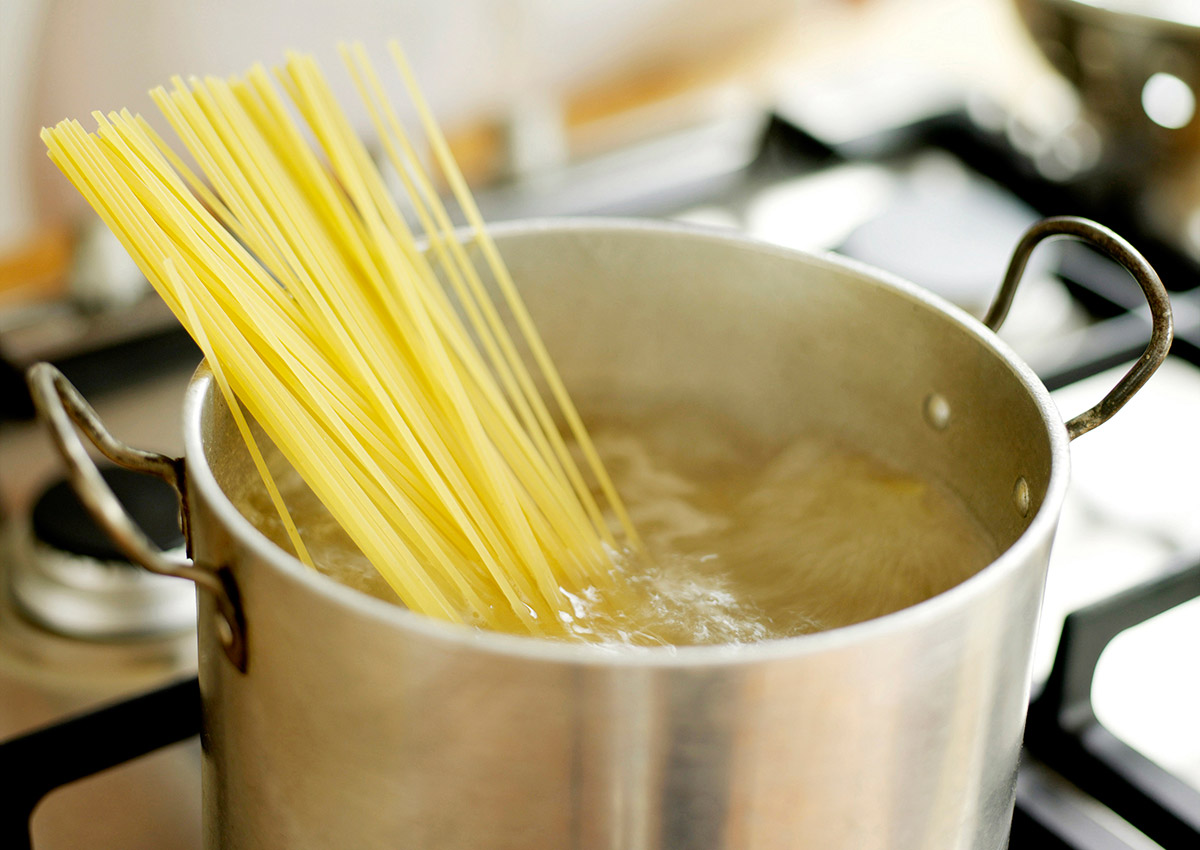 Image source/ AsiaOneSalt your pasta water - it's a must. And don't underdo it. Yes, it makes a difference. A huge one in fact. Without salt, pasta pretty much tastes of nothing - it's totally bland. So, this step, as simple as it may be, can be the difference between a good and bad pasta dish.
Image source/ AsiaOneSalt your pasta water - it's a must. And don't underdo it. Yes, it makes a difference. A huge one in fact. Without salt, pasta pretty much tastes of nothing - it's totally bland. So, this step, as simple as it may be, can be the difference between a good and bad pasta dish.Advertisement
5. Par boil your spuds for roast potatoes
The ultimate roast potato is no easy feat. Well, it's simpler than you think if you follow this advice. Start by par boiling the spuds before putting them in the oven. This is the ultimate way to achieve the perfect roast if you want the outer case to be crispy and to make the inside ultra fluffy.Advertisement
6. Roast your vegetables
When you roast vegetables, you may find that they don't often turn out that tasty or you may find they haven't cooked so well. It may sound strange but cook them until you can see they are a little bit brown. And before cooking, add lots and lots of olive oil, salt, pepper and any spices you like.Advertisement
7. Don't mess with the steak
A key steak cooking tip from a professional chef - leave the steak alone. Leave it in the pan. Let it cook. There's no need to keep turning it or piercing it with a fork or sliding it around the pan. You'll lose moisture and heat. The best way to cook it is by touching it the least.Advertisement
8. Leave the fat on the meat to cook
Leaving the fat on the meat whilst you cook it makes all the difference. This by no means, means that you have to actually eat the fat. Cut it off once it's cooked. But it will help keep in the moisture of your meat as well as adding to the flavour whilst you cook.Advertisement
9. Get everything prepared
Get all the preparation done, chopped and ready to be used - just like in the cooking shows. This way it ensures you don't overcook things because you don't have to wait in the midst of cooking while you prepare the ingredient that you had forgotten.Advertisement
10. Don't watch the toaster
This tip is more of a comical what not to do when cooking toast, rather than advice for advancing our culinary skills. But from a professional chef to us...don't watch the toaster when waiting for your toast to pop because it WILL make you jump. Even if you think you're expecting it.Advertisement
11. Don't put oil in the boiling water
 Image source/ southernlivingSome people actually add oil in their boiling water when cooking pasta so that the pasta does not all stick together. But don't. The sauce will not stick to the pasta like it does when the water is starchy, it will just slide right off. Plus, it you stir your pasta whilst cooking and don't overcook it won't stick together.
Image source/ southernlivingSome people actually add oil in their boiling water when cooking pasta so that the pasta does not all stick together. But don't. The sauce will not stick to the pasta like it does when the water is starchy, it will just slide right off. Plus, it you stir your pasta whilst cooking and don't overcook it won't stick together.Advertisement
12. Sharpen your knives
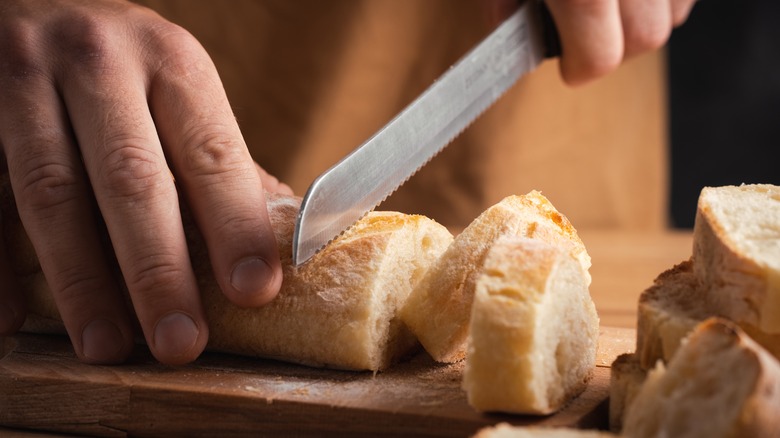 Image source/ tastingtablesA sharper knife makes such a difference to your cooking, whether it is meat or veggies. With veg, it will slide through easily and make things so much faster - especially when chopping inions. And a sharp knife is crucial for meat because it means you don't ruin the texture and achieve a nice, clean cut.
Image source/ tastingtablesA sharper knife makes such a difference to your cooking, whether it is meat or veggies. With veg, it will slide through easily and make things so much faster - especially when chopping inions. And a sharp knife is crucial for meat because it means you don't ruin the texture and achieve a nice, clean cut.Advertisement
13. Don't just put up the temperature to speed up cooking
 Image source/ YouTubeSometimes you might want to speed up the cooking process. And you may be tempted to whack up the temperature. But this is not what you should do if you want good food. And it might just end up burning the outside and still not cooking the inside properly.
Image source/ YouTubeSometimes you might want to speed up the cooking process. And you may be tempted to whack up the temperature. But this is not what you should do if you want good food. And it might just end up burning the outside and still not cooking the inside properly.Advertisement
14. Crack eggs on a flat surface area
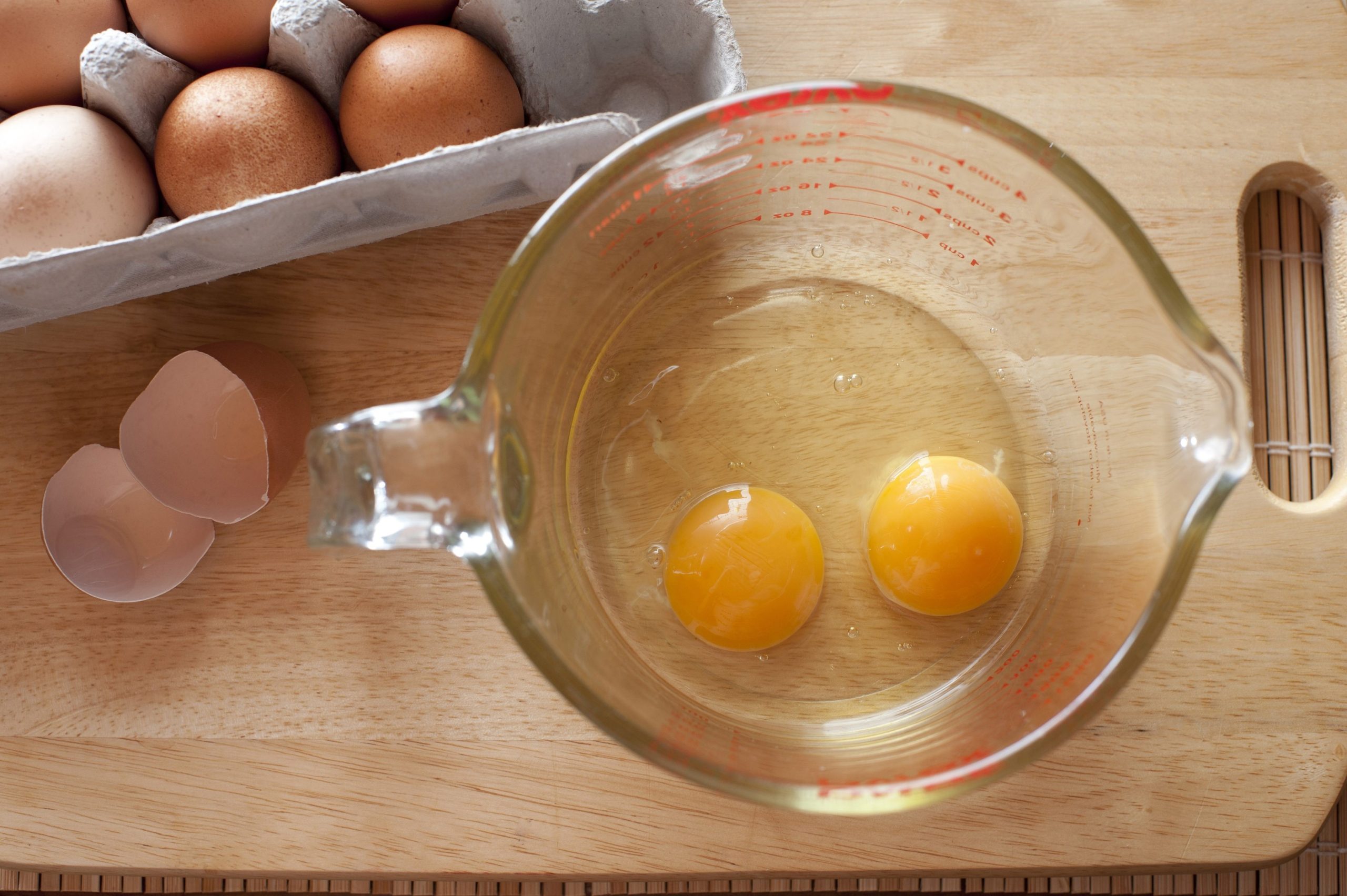 Image source/ cooknewsCracking eggs on a flat surface may sound strange. The tendency is to use the side of a bowl. When you do it on the edge of a surface it actually pushes the shell back inside so it's easier to end up with bits floating in your egg mixture. And it can also push dirt inside too.
Image source/ cooknewsCracking eggs on a flat surface may sound strange. The tendency is to use the side of a bowl. When you do it on the edge of a surface it actually pushes the shell back inside so it's easier to end up with bits floating in your egg mixture. And it can also push dirt inside too.Advertisement
15. Use the residue in the pan
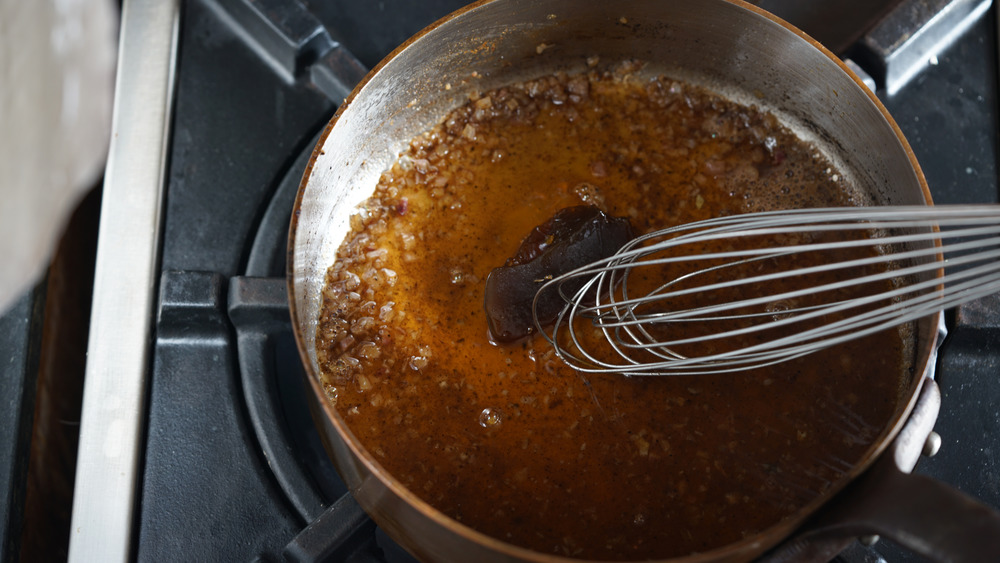 Image source/ mashedYou know all that residue in the bottom of the pan, where the sauce has thickened and stuck. Do NOT throw it. It's literally the tastiest part. Make sure you loosen it up and deglaze it to add it to the food. But this does not work with non-stick Teflon pans it has to be something like a steel or cast iron or ceramic pot.
Image source/ mashedYou know all that residue in the bottom of the pan, where the sauce has thickened and stuck. Do NOT throw it. It's literally the tastiest part. Make sure you loosen it up and deglaze it to add it to the food. But this does not work with non-stick Teflon pans it has to be something like a steel or cast iron or ceramic pot.Advertisement
16. Taste as you go
 Image source/ HuffPostYou'll have probably heard this cooking tip before...tasting as you go. But it is the key to good cooking. Because this way you know how things are tasting and when to add more seasoning or flavours. Waiting until the end is too late because the food won't have cooked in the seasoning.
Image source/ HuffPostYou'll have probably heard this cooking tip before...tasting as you go. But it is the key to good cooking. Because this way you know how things are tasting and when to add more seasoning or flavours. Waiting until the end is too late because the food won't have cooked in the seasoning.Advertisement
17. Don't under season!
 Image source/ apptivSeasoning, seasoning seasoning. It's so important. This is the difference between a boring and bland dish, to a dish where the flavours pop and it tastes delicious. Seasoning your food is key to making it taste good. It's so simple, but so important.
Image source/ apptivSeasoning, seasoning seasoning. It's so important. This is the difference between a boring and bland dish, to a dish where the flavours pop and it tastes delicious. Seasoning your food is key to making it taste good. It's so simple, but so important.Advertisement
18. Dry your meat before searing
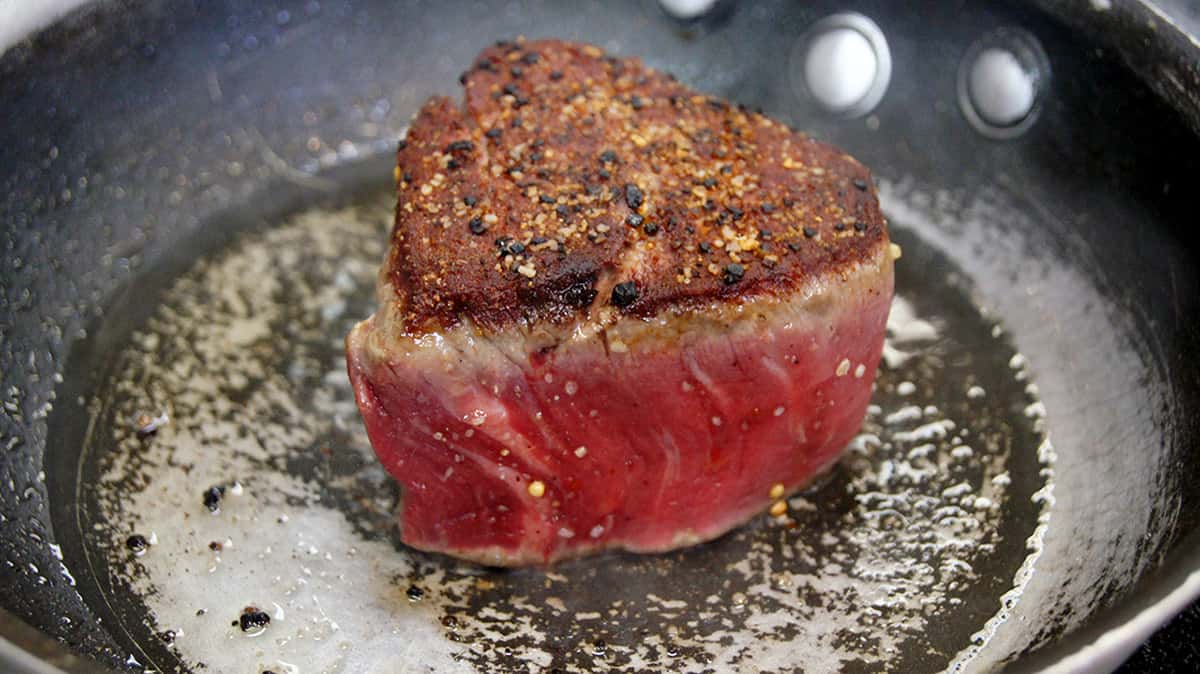 Image source/ lakevegcounterDry your meat by placing it on a paper towel before you start searing it in a pan. It will mean that you lose less moisture, and the ends will sear much more effectively, and it will be easier to cook. You'll notice a massive difference in your steak cooking.
Image source/ lakevegcounterDry your meat by placing it on a paper towel before you start searing it in a pan. It will mean that you lose less moisture, and the ends will sear much more effectively, and it will be easier to cook. You'll notice a massive difference in your steak cooking.Advertisement
19. Using the right cuts of meat
 Image source/ theculinarycookUsing the right cut of meat is important for flavour. For example, sometimes chicken breast is not always the best option. If you're after flavour then a chicken thigh is often much better, and it does not dry out like a chicken breast does. And it's cheaper. If you are opting for lean meat only, that is when a chicken breast is better
Image source/ theculinarycookUsing the right cut of meat is important for flavour. For example, sometimes chicken breast is not always the best option. If you're after flavour then a chicken thigh is often much better, and it does not dry out like a chicken breast does. And it's cheaper. If you are opting for lean meat only, that is when a chicken breast is betterAdvertisement
20. Vary your recipes
 Image source/ greatlistDon't just cook the same one over and over as soon as you find one that works and tastes good - we know it's tempting. Finding a crowd pleaser can be tough. But you'll never develop your skills, palette or cooking repertoire with the same recipes. So, branch out a little.
Image source/ greatlistDon't just cook the same one over and over as soon as you find one that works and tastes good - we know it's tempting. Finding a crowd pleaser can be tough. But you'll never develop your skills, palette or cooking repertoire with the same recipes. So, branch out a little.Advertisement
21. Try new ingredients often
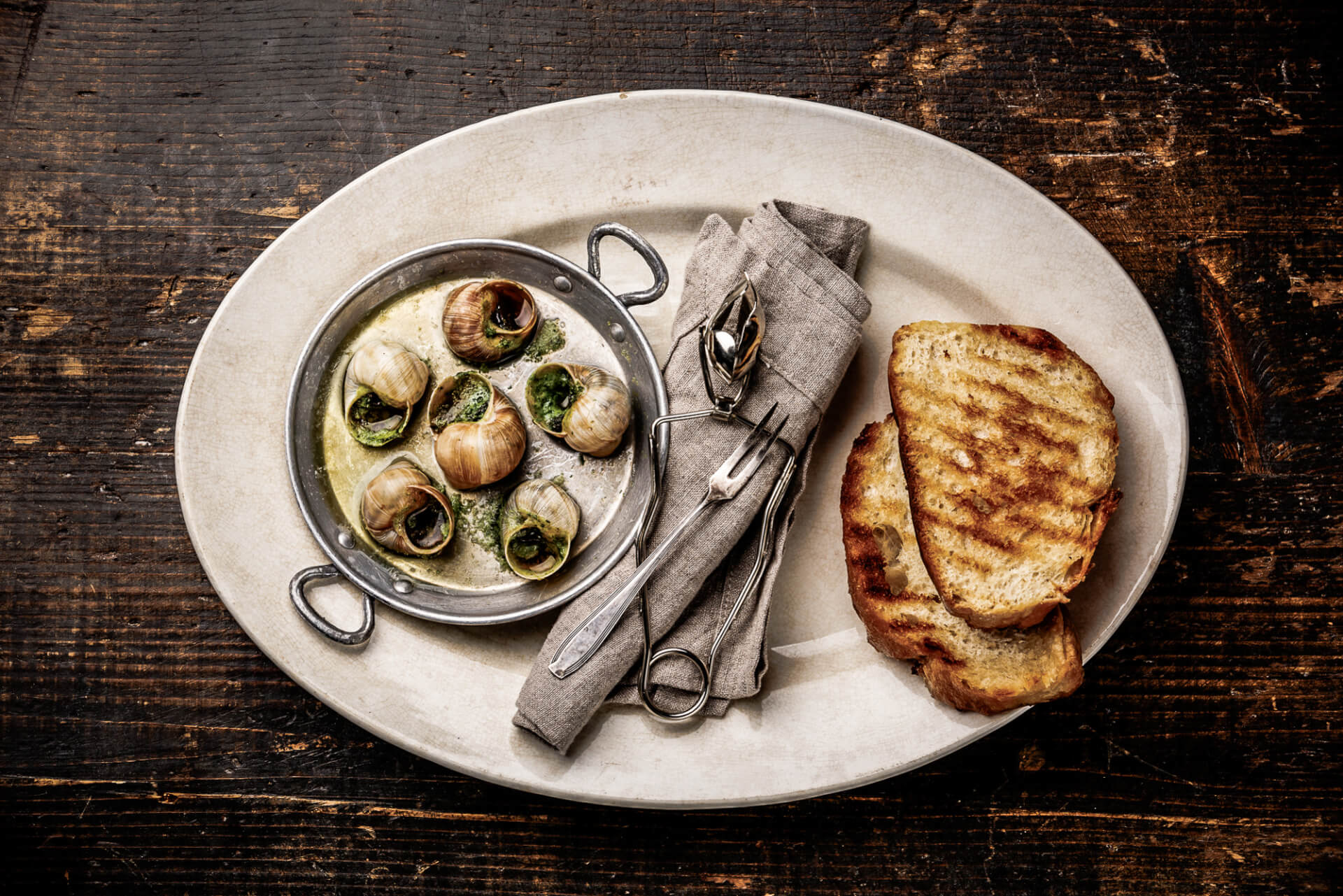 Image source/ theculinarytravelguideAlways stick to what you know and using the same ingredients over and over means that you can never really progress. Or find out what combinations REALLY work. Staying in the comfort zone won't help you master cooking so keep experimenting when you can.
Image source/ theculinarytravelguideAlways stick to what you know and using the same ingredients over and over means that you can never really progress. Or find out what combinations REALLY work. Staying in the comfort zone won't help you master cooking so keep experimenting when you can.Advertisement
22. Don't put food in a COLD pan
 Image source/ myrecipesAdding food to a cold pan and then waiting of the pan to warm up with the food inside is never a good idea. Always warm your pan first. This way, the food won't be in their as long, and it will have consistent cooking which really helps in the overall quality of your dish.
Image source/ myrecipesAdding food to a cold pan and then waiting of the pan to warm up with the food inside is never a good idea. Always warm your pan first. This way, the food won't be in their as long, and it will have consistent cooking which really helps in the overall quality of your dish.Advertisement
23. The quality of the ingredients matters
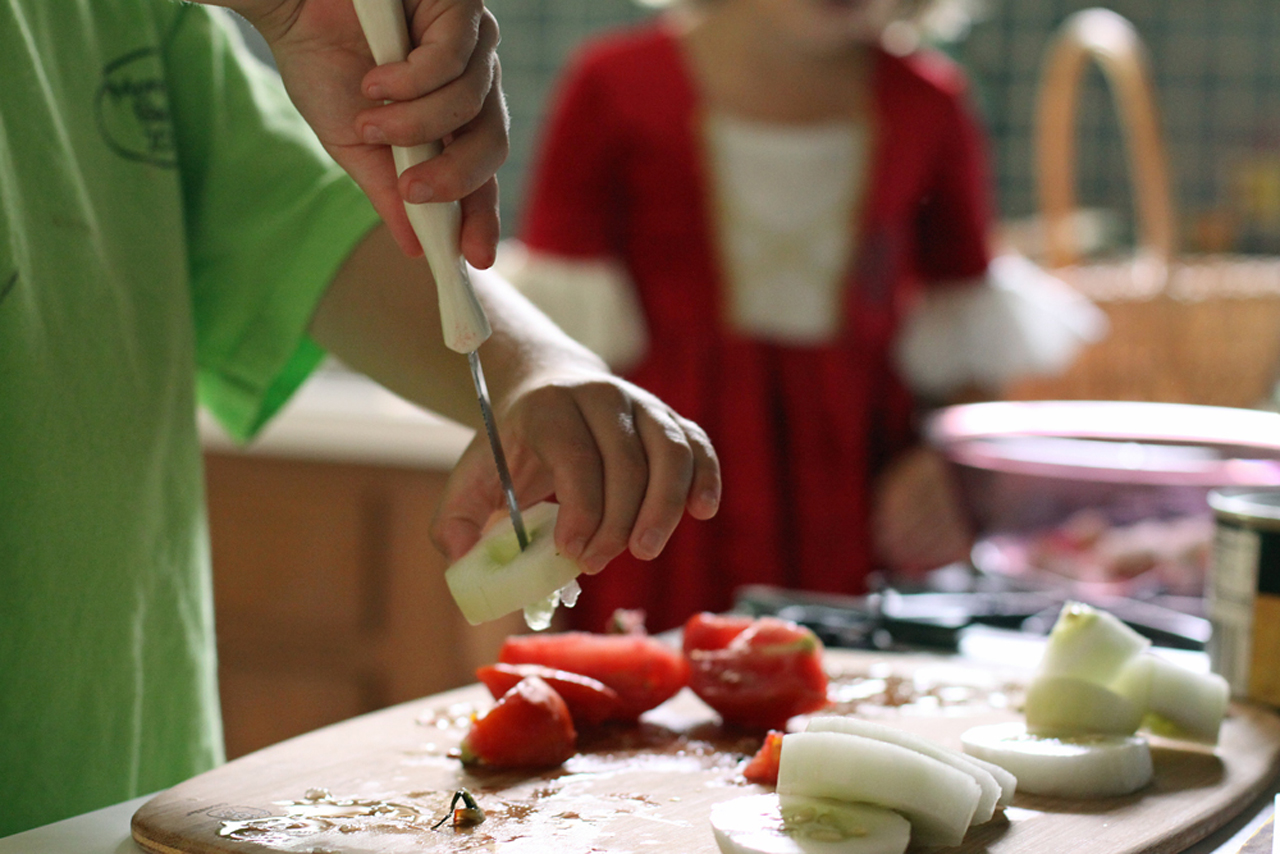 Image source/ WBURQuality ingredients are what makes a dish. So yes, a bag of spuds may be 20p and another may be 2.50 and the rational thing to do is to reach for the cheapest. But sometimes this really does affect the taste. If you're wanting optimum taste, then go for quality ingredients.
Image source/ WBURQuality ingredients are what makes a dish. So yes, a bag of spuds may be 20p and another may be 2.50 and the rational thing to do is to reach for the cheapest. But sometimes this really does affect the taste. If you're wanting optimum taste, then go for quality ingredients.Advertisement
24. Use FRESH herbs not dried
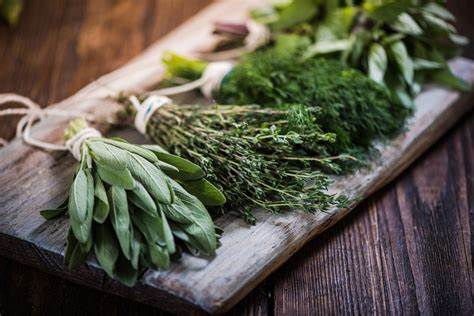 Image source/ UChealthYes, it's cheaper and more practical to use dried herbs, and they are fine. But, if you really want your dish to flourish, then try fresh. It makes a huge difference that you will notice in the end result. The flavours are much different when a herb is dried versus fresh.
Image source/ UChealthYes, it's cheaper and more practical to use dried herbs, and they are fine. But, if you really want your dish to flourish, then try fresh. It makes a huge difference that you will notice in the end result. The flavours are much different when a herb is dried versus fresh.Advertisement
25. Use metric recipes
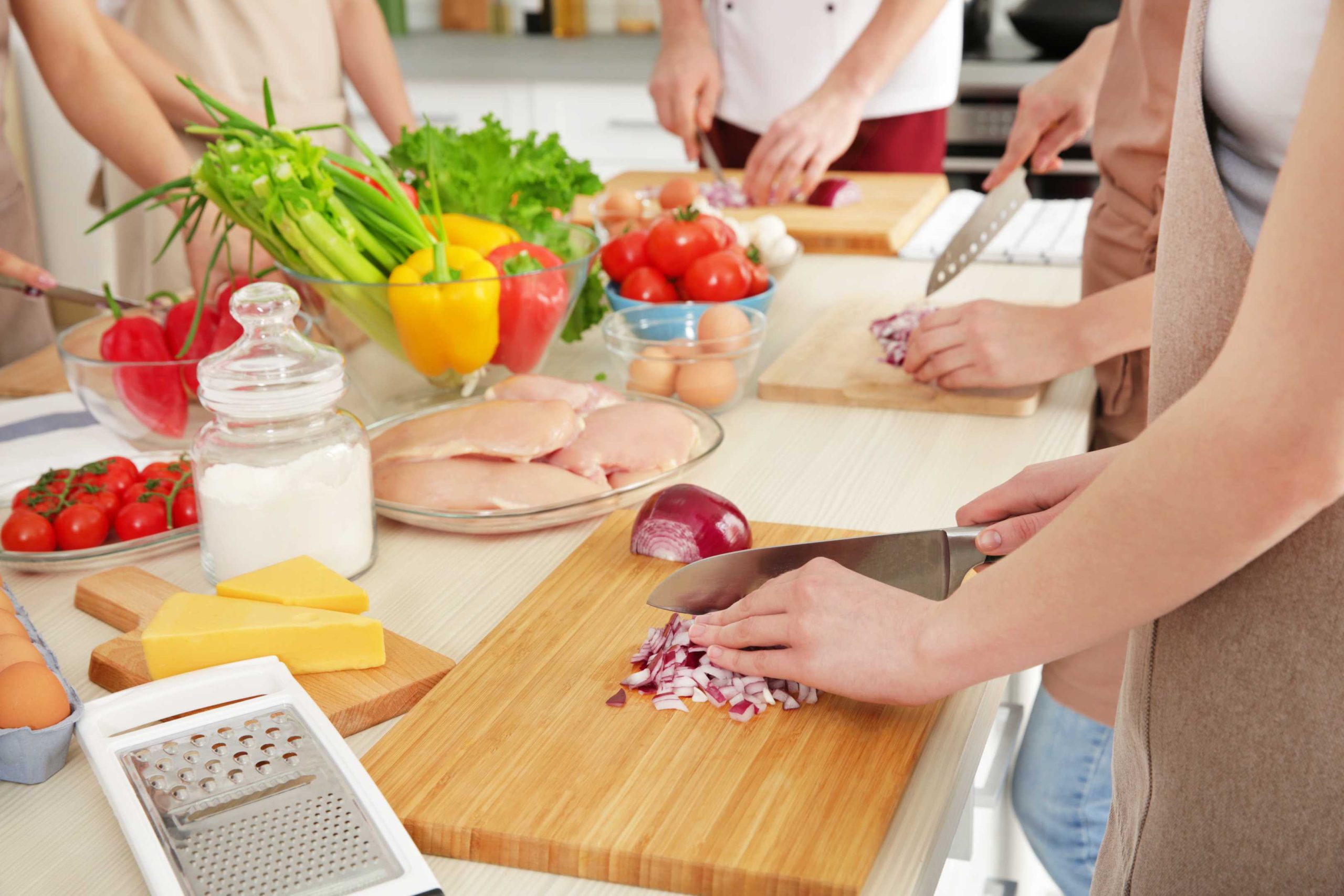 Image source/ chattanogaIt may seem simpler not following metric recipe, but the taste won't be as good. When following recipes with measurements such as teaspoons or cups you can never be as precise. The balance of a dish can be a fine thing and so it's best to be as precise as possible.
Image source/ chattanogaIt may seem simpler not following metric recipe, but the taste won't be as good. When following recipes with measurements such as teaspoons or cups you can never be as precise. The balance of a dish can be a fine thing and so it's best to be as precise as possible.Advertisement
26. Stir-fry's should be sizzling hot
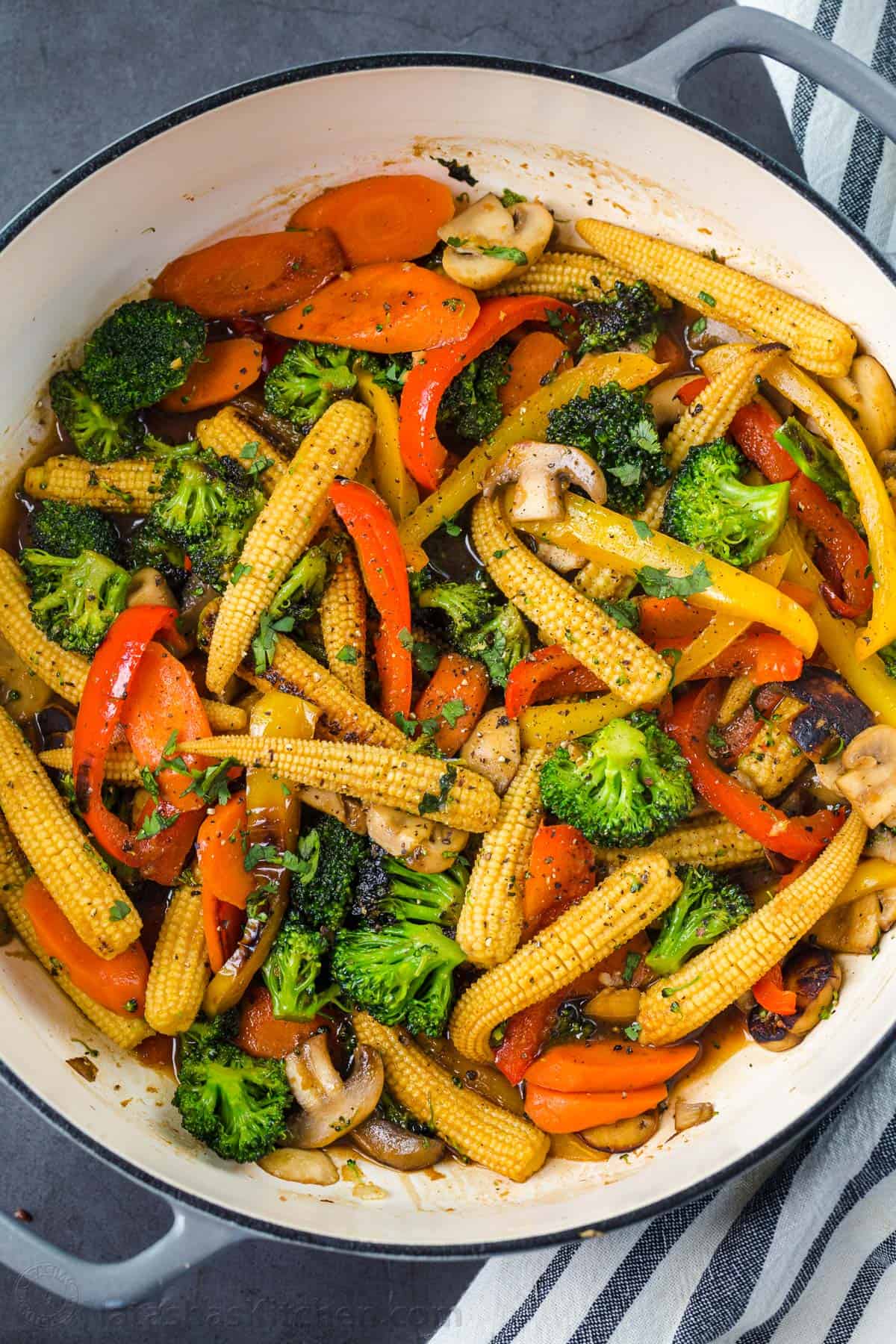 Image source/ natashasrecipeThis may sound obvious, but we don't just mean hot, we mean SIZZLING hot. The whole stir-fry should not take more than five minutes. If you can't hear it sizzling, then you're boiling it rather than stir-frying. To maintain a constant heat try waiting 30 seconds between adding ingredients for the heat to rebuild.
Image source/ natashasrecipeThis may sound obvious, but we don't just mean hot, we mean SIZZLING hot. The whole stir-fry should not take more than five minutes. If you can't hear it sizzling, then you're boiling it rather than stir-frying. To maintain a constant heat try waiting 30 seconds between adding ingredients for the heat to rebuild.Advertisement
27. Simple is often better
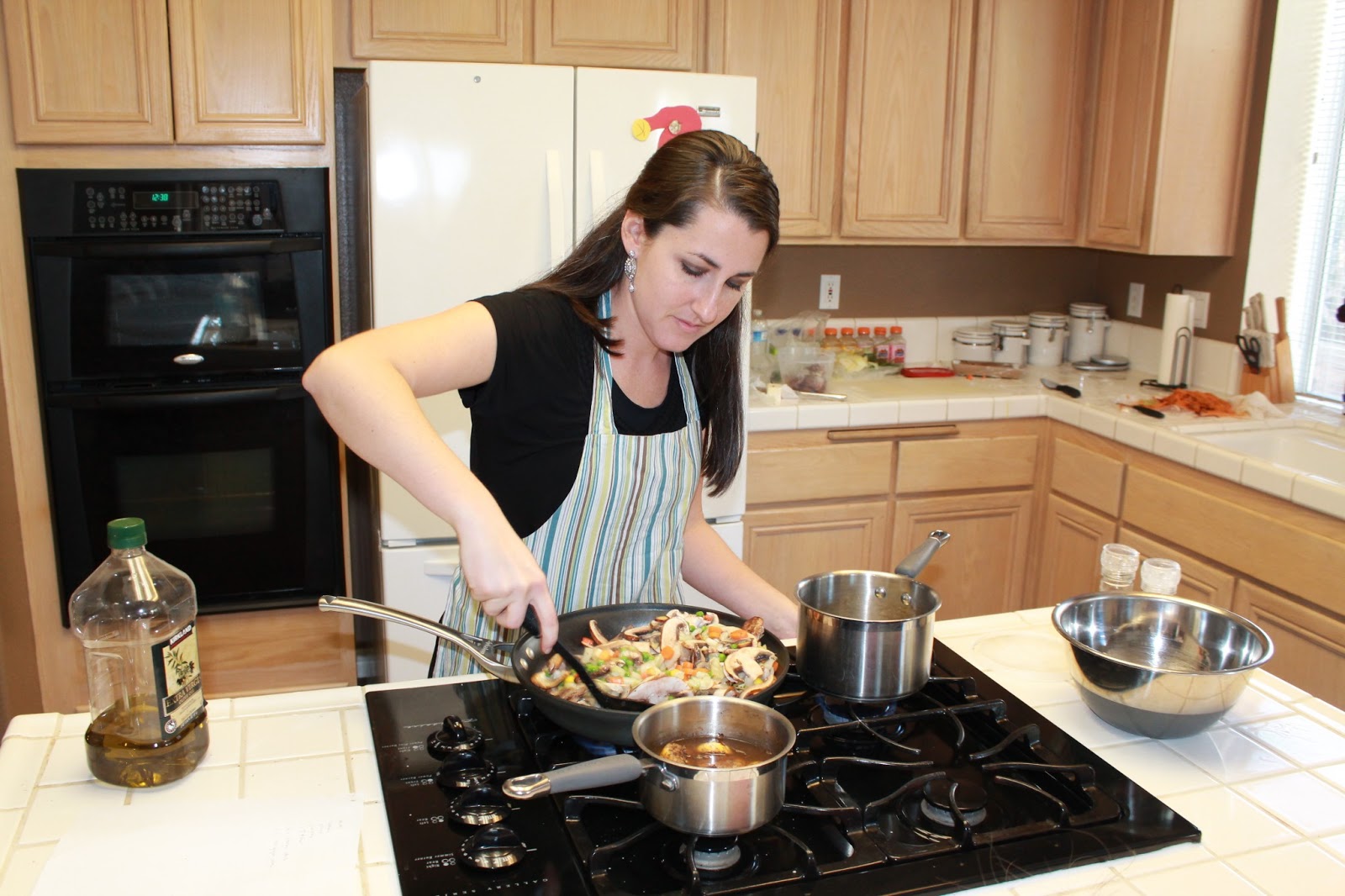 Image source/ smarthealthshopOne thing that can be a common misconception is that a lot of ingredients means that it has to be tasty. This isn't true. You should let the flavours come out and they will speak for themselves, rather than adding a whole load of unnecessary ingredients.
Image source/ smarthealthshopOne thing that can be a common misconception is that a lot of ingredients means that it has to be tasty. This isn't true. You should let the flavours come out and they will speak for themselves, rather than adding a whole load of unnecessary ingredients.Advertisement
28. Don't put oil in your steak skillet
 Image source/ momsdishNow so many people do this, because they think it is the correct thing to do. They heat up some oil or butter in a hot pan before adding the steak. What's actually better to do is to leave it dry and then place the steak on the dry heat and let it sit.
Image source/ momsdishNow so many people do this, because they think it is the correct thing to do. They heat up some oil or butter in a hot pan before adding the steak. What's actually better to do is to leave it dry and then place the steak on the dry heat and let it sit.Advertisement
29. Less salad dressing is more
 Image source/ drlauraskitchenThis is one of the most common mistakes. And it's so simple to fix. People do not even realise they do it, and this is the difference between a delicious salad and an overly sharp soggy salad. Do not add too much dressing or you will end up with too much vinegar which doesn't enhance but overpowers.
Image source/ drlauraskitchenThis is one of the most common mistakes. And it's so simple to fix. People do not even realise they do it, and this is the difference between a delicious salad and an overly sharp soggy salad. Do not add too much dressing or you will end up with too much vinegar which doesn't enhance but overpowers.Advertisement
30. You remove the lid
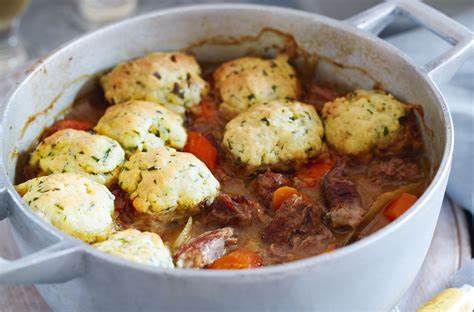 Image source/ quickhomemaderecipesIf you are making a stew, a casserole, or any kind of one pot or crock pot dish then it is really important not to keep removing the lid. Fist off it lets all of the heat which has built up escape. Two, all of that moisture is bubbling inside, not letting the flavours escape. But, as soon as you open the lid this is all let out too.
Image source/ quickhomemaderecipesIf you are making a stew, a casserole, or any kind of one pot or crock pot dish then it is really important not to keep removing the lid. Fist off it lets all of the heat which has built up escape. Two, all of that moisture is bubbling inside, not letting the flavours escape. But, as soon as you open the lid this is all let out too.Advertisement